Military Service
and WW1
These photographs feature William
Herlingshaw, during his military service just before WW1 started.
In this photograph below he is sitting on the left with one of the dogs
on his lap. This photo is thought to be pre-1912. It might date from
his very first days after enlistment in 1906 as all soldiers were
required to have a moustache then and he and the others in the photo
do no (apart from the lance-corporal).
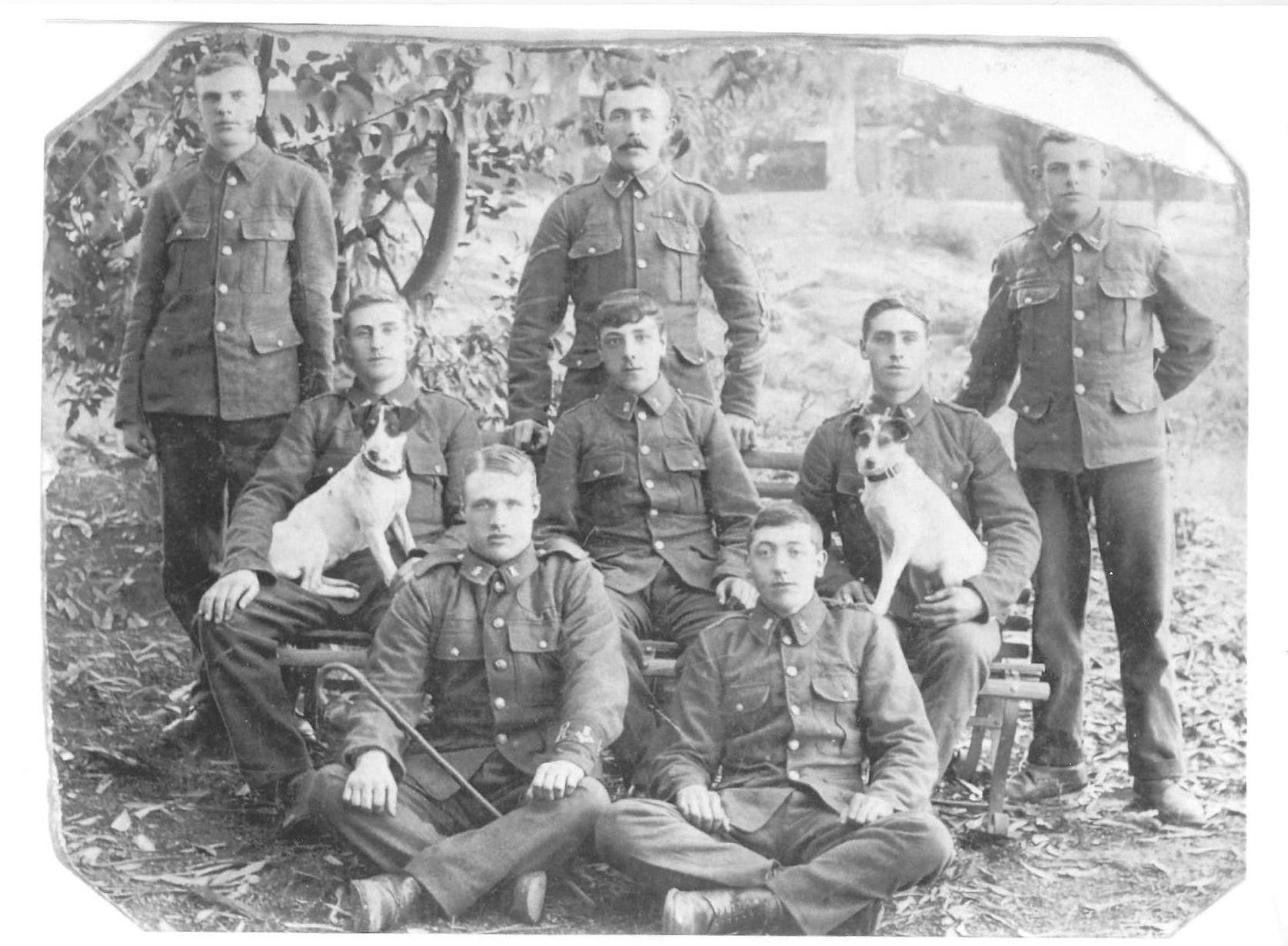
In this picture below he is standing in the
line, fourth from the left with a moustache, no cap. This probably
dates from around September 1914. The soldiers without moustaches
would have been newly recruited.
H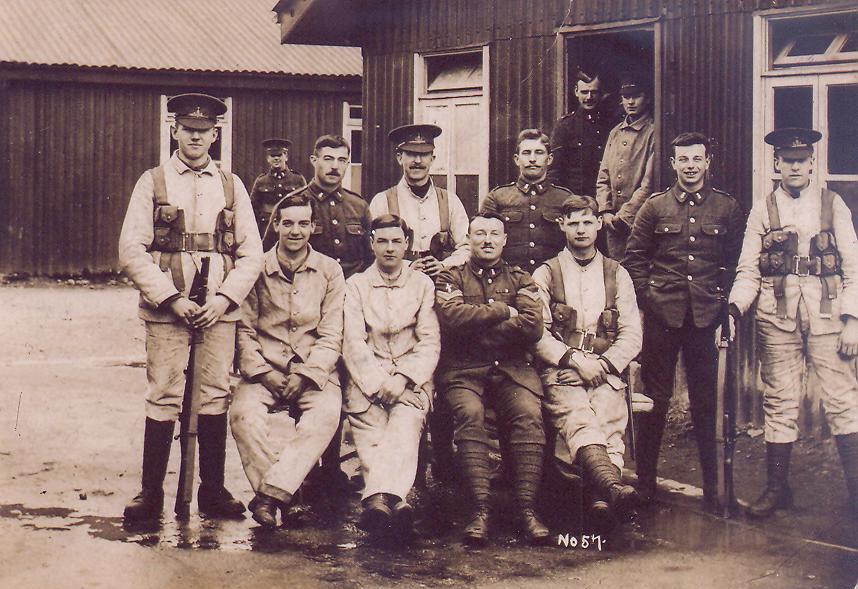
These are the actual WW1 medals awarded to
William Herlingshaw (War medal left, 1914 Star with "Clasp and
Roses" right, Victory medal below). The clasp was only added
for those within range of enemy fire between 5th August and 22nd
November 1914:
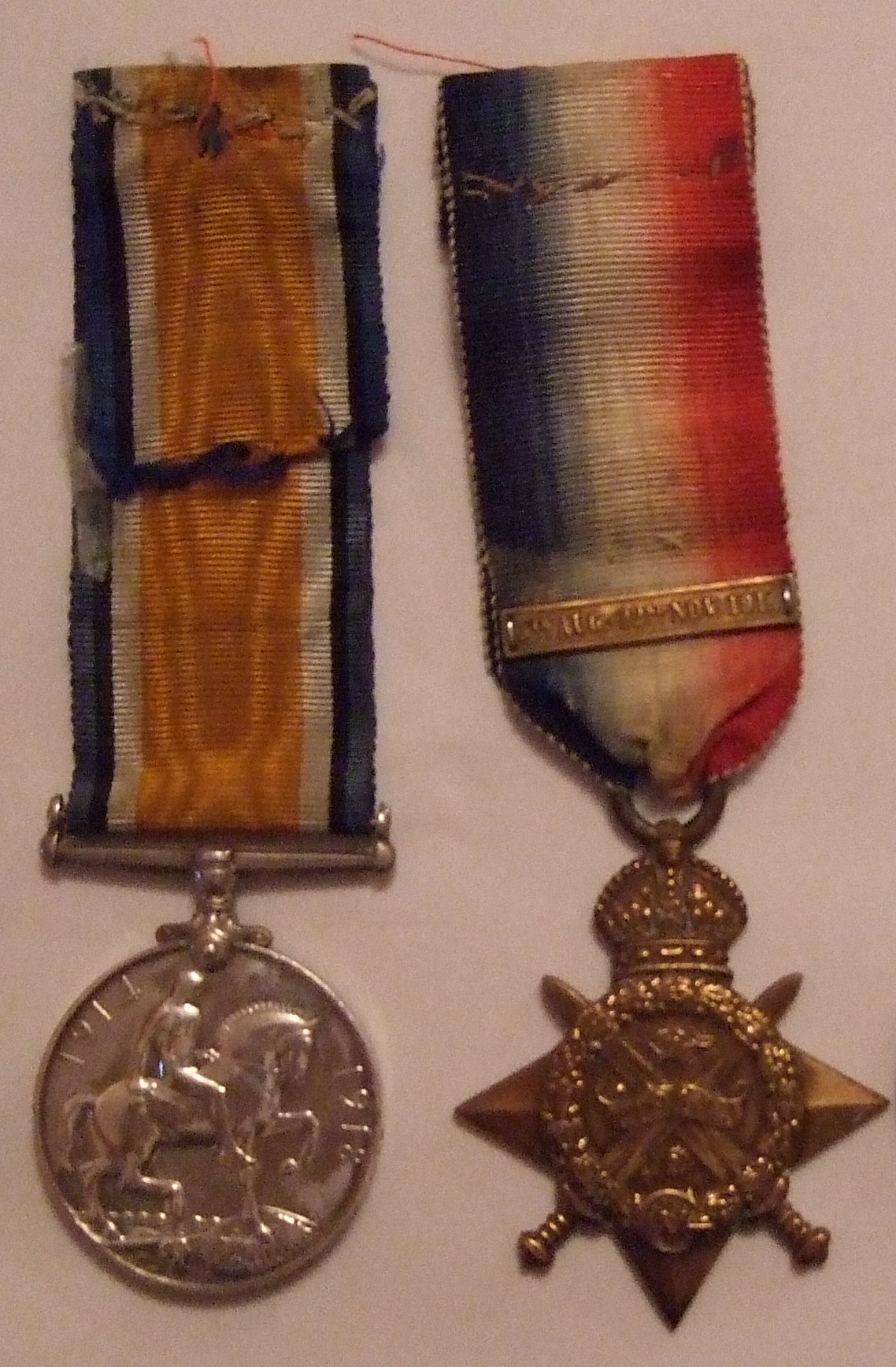
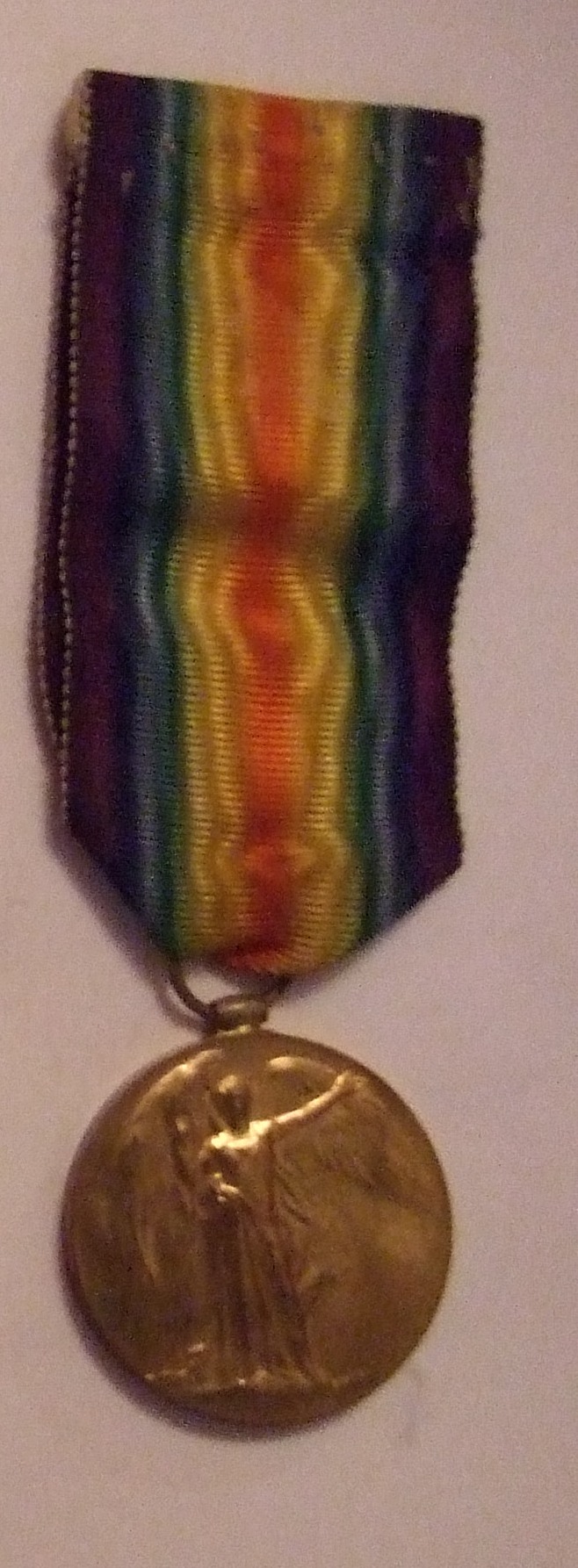
This is William's Silver War Badge
(actually a brooch), awarded to military personnel that were
wounded, became sick or otherwise disabled during WW1. It was
created so that people would know that the wearer was not evading war service.
William was Private 8281 in the Yorkshire Regiment (Green Howards)
and was discharged due to his injuries on 5 June 1916 after serving
for 8 years and 321 days plus 1 year and 159 days in the Army
Reserve. At that time he was 30 years and 5 months old. He fought in
the first Battle of Ypres in 1914 and in the Battle of Loos in 1915.
He was in the 2nd Battalion of the Howards, at least initially.
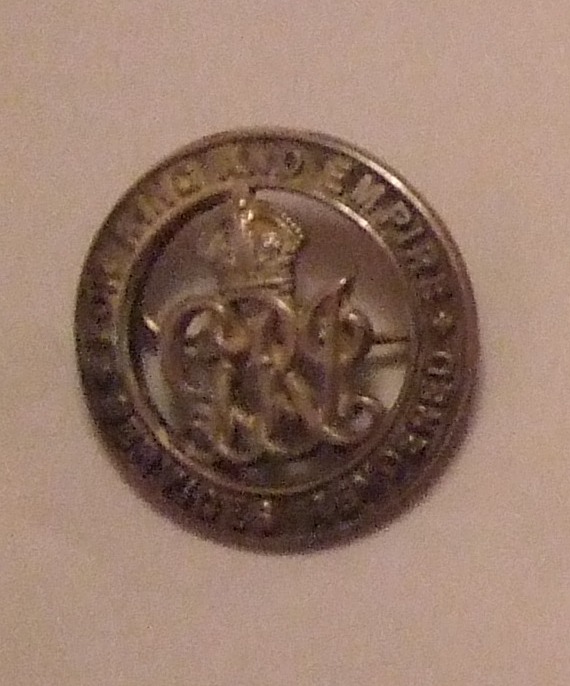
This is William's Old Contemptibles
Association badge, membership was reserved for those who fought in the
very first
battles of WW1 in 1914:
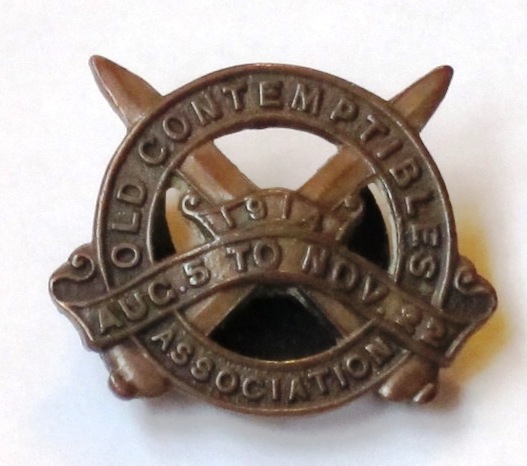
This is William's British Legion
badge:
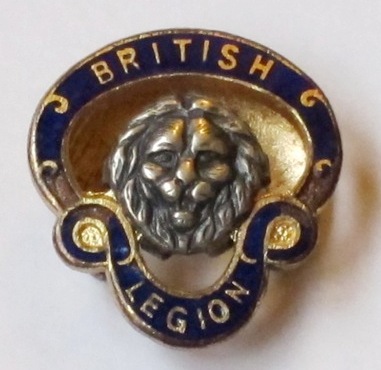
The cap badge below is a conundrum.
It is said to be William's but is from the York and Lancaster
Regiment. William was definitely in the Yorkshire Regiment from the
beginning of
WW1. According
to my late cousin "Young Billy" Herlingshaw, in a note from 2004,
William was in the York and Lancaster during the Boer War. So maybe
that is the explanation - but this particular badge apparently dates
from no earlier than 1903 as the fixing is a "slider" rather than a
brooch arrangement.
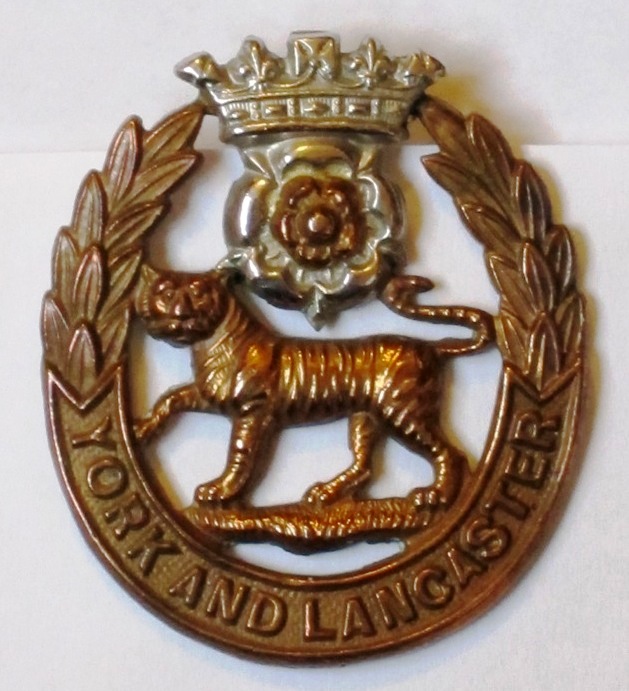
However the "Green Howard's"
(Yorkshire Regiment) cap badge below almost certainly was William's.
This particular version of the badge was only issued between 1914
and 1918.
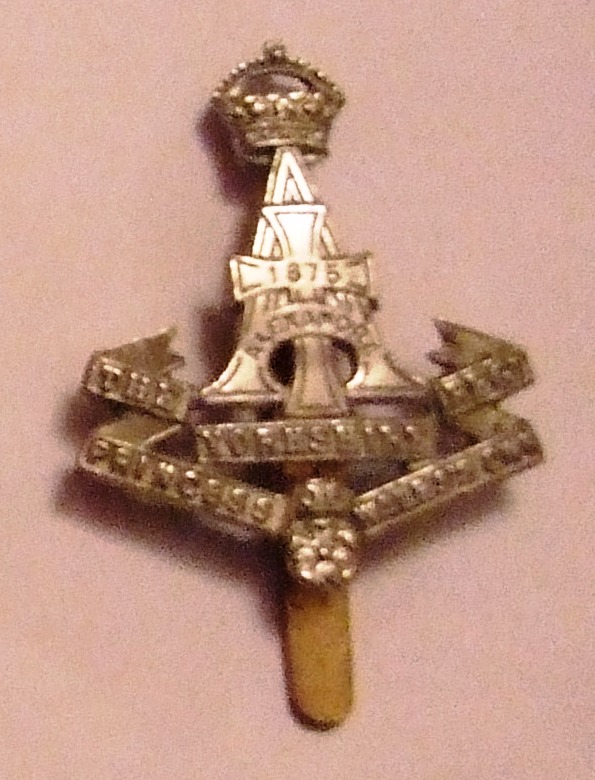
This "In Memoriam" card was almost
certainly given to William when he was serving in the army before
WW1, perhaps he was one of those called upon to take part in the
funeral ceremony. Unfortunately King Edward's attempts at
peacemaking in Europe were to fall apart within a few years of his
death.
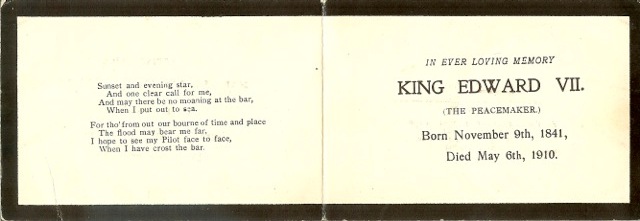
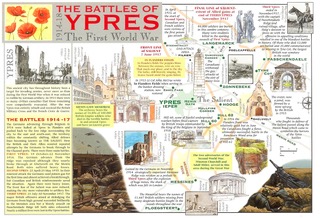
Eventually William
received a soldier's pension and a gratuity. On an army form from
the 1920's he is listed as living at 118 Stapylton Street,
Grangetown. Intriguingly his pension record form no. SB36 also
states "96297D Alias Shaw" - he probably initially
used that surname in the army.



|



